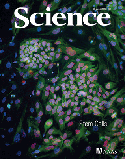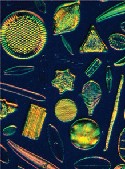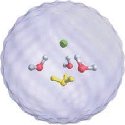 Progress in Stem Cell
Research
Progress in Stem Cell
Research
Introduction
to Special Issue
The capacity of human stem cells to self-renew and to differentiate
into multiple cell types (pluripotency) makes them valuable for
modeling human disease and attractive candidates for targeted
therapies. A special section of the 26 Jun 2009 Science highlighted recent progress
in stem cell research made possible by interdisciplinary efforts and
improved communication among researchers, clinicians, and bioengineers.
Review articles examined the role of stromal stem cells in wound
repair, research on cancer stem cells and their relevance for cancer
therapy, and new technologies being used to elucidate the biophysical
properties of stem cells and their microenvironments. Two Perspectives
looked at the limits of acceptable medical innovation when it comes to
stem cell research and the role of the U.S. Food and Drug
Administration in evaluating the safety of stem cell–based products
intended for clinical application. Elsewhere in the magazine, a Policy
Forum outlined draft guidelines for stem cell research established by
the National Institutes of Health and an Editorial highlighted the need
for revised federal funding policies.
Amazon Booms and Busts
The Brazilian Amazon is renowned for its biodiversity and for its
influence on climate regulation and geochemical cycles. It is also one
of the country's poorest regions. For decades, economic development has
been pursued through the clearing of forests for cattle ranching and
agriculture. In a Report in the 12 Jun 2009 Science, Rodrigues
et al. investigated whether such patterns of land use are indeed
associated with a sustained improvement in people's well-being across
the region's deforestation frontier. The team analyzed data on the
economic development of 286 municipalities in different stages of
deforestation and found a boom-and-bust pattern in levels of human
development across the frontier. That is, relative standards of living,
literacy, and life expectancy tend to increase as deforestation begins
but then decline as deforestation progresses. As a result, people in
areas that have cleared their forests do not end up better off than
those in areas where forests remain intact. In a related podcast
interview, lead author Ana Rodrigues discussed the challenges of
ensuring sustained improvements in human well-being while avoiding the
depletion of natural resources. This will likely require a combination
of approaches, including better use of land that has already been
cleared, promoting reforestation in degraded landscapes, direct
incentives to encourage forest-based livelihoods based on the
sustainable harvesting of timber and other forest products, and
payments for carbon sequestration.
 Seeds in Flight
Seeds in Flight
Each spring, winged maple seeds twirl like helicopters as they descend
to the ground. On a windy day, these rotating seeds can travel up to a
kilometer, generating unexpectedly high lift forces despite their small
size and slow velocity. Now, in a Report in the 12 Jun 2009 Science, Lentik
et al. explain that winged seeds employ the same aerodynamic
mechanism that helps moths, bats, and probably birds stay aloft (see
the ScienceNOW story by J. Grom).
Using a robot model seed and a three-dimensional flow measurement
technique, the team found that falling maple seeds create a spiraling
flow of air known as a leading-edge vortex that is similar to the flow
structures that are responsible for the high lift generated by the
wings of hovering insects and bats. This vortex decreases the pressure
above the seed, essentially sucking it upward to slow its descent. The
use of leading-edge vortices thus represents a convergent aerodynamic
solution in the evolution of high-performance flight in both animals
and plants.
Controlling Chronic Viral
Infections
T cell–mediated immune responses are critical for controlling viral
infections such as HIV infection and hepatitis B and C. During the
initial phases of infection, cytotoxic CD8+ T cells whittle away at the
viral load by killing off infected cells, but progressively become
"exhausted" and lose function during a chronic infection. This
exhaustion becomes more severe in the absence of helper CD4+ T cells,
but exactly how CD4+ T cells help CD8+ T cells has been unclear. Three
Reports published in the 19 Jun 2009 Science
-- by Elsaesser
et al. (published online 7 May), Yi et
al. (published online 14 May), and Fröhlich
et al. (published online 28 May) -- now show that the cytokine
interleukin-21 (IL-21) is an essential factor produced by CD4+ T cells,
known to be important for the differentiation of certain subsets of
CD4+ T cells, that helps CD8+ T cells to control chronic lymphocytic
choriomeningitis virus (LCMV) infection in mice. When CD8+ T cells were
unable to signal through IL-21 or when IL-21 was not available, they
were reduced in number, exhibited a more exhausted phenotype, and were
not able to control the virus. In contrast, the absence of
IL-21–dependent signaling did not affect primary CD8+ T cell responses
to acute infection or responses to a viral rechallenge, suggesting that
differentiation of memory CD8+ T cells is independent of IL-21. Whether
IL-21 also acts on other immune cell types to help resolve chronic LCMV
infection remains to be determined. An accompanying Perspective
by L. D. S. Johnson and S. C. Jameson highlighted the findings.
 Green Diatom Genes
Green Diatom Genes
Diatoms are the dominant component of marine phytoplankton and account
for 20% of global carbon fixation. Together with other chromalveolates
(e.g., dinoflagellates and coccolithophorids), they represent many
thousands of eukaryotic taxa in the world's oceans. In a Report in the
26 Jun 2009 Science, Moustafa
et al. presented surprising new insights into the evolution
of these organisms, made possible by comparative genome analyses.
Diatoms are known to have acquired their photosynthetic organelles, or
plastids, from red algae via a process known as secondary
endosymbiosis. One would therefore expect diatom genomes to contain
many nuclear genes with a red algal origin. But the new study reveals
that diatom genomes are more green than red. The team compared the
thousands of genes in two completely sequenced diatom genomes to
hundreds of other sequenced genomes and found that although a number of
diatom genes appear to derive from red algae, more of them -- more than
1000 genes, constituting ~16% of the genome -- have a green algal
origin. The researchers suggest that ancient diatoms once possessed a
green algal endosymbiont that donated green genes to the nucleus and
that this green plastid was later replaced by an endosymbiotic event
that gave rise to the contemporary red plastid. An accompanying Perspective
by T. Dagan and W. Martin highlighted the work noting that, like much
other recent genomic data, the new findings "do not fit comfortably
into current theories of algal evolution."
Human Social Evolution
The origins of modern human behavior are marked by increased symbolic
and technological complexity in the archaeological record, including
evidence of sophisticated tools, musical instruments, and art. Two
studies in the 5 Jun 2009 Science
examined the roles of human interactions and population dynamics in
shaping how human social behavior evolved. Bowles
constructed a model of the impact of competition between groups of
humans and incorporated ethnographic and archaeological evidence of
adult mortality due to warfare in prehistoric and hunter-gather
populations. His analysis suggests that intergroup warfare was
sufficiently prevalent that altruistic behaviors could have evolved
because they improved a group's chances to win lethal conflicts.
Turning to the evolution of technological and cultural complexity, Powell
et al. presented a population model that shows that the
development of modern behaviors may rely on the attainment of critical
population densities and migratory patterns required for stable
cultural transmission. The model is consistent with genetically based
estimates of population dynamics in Africa and Europe and suggests that
the appearance of modern behavior may not solely reflect increased
cognitive capacity. R. Mace discussed the findings in a related Perspective
and podcast
interview.
 From X-ray Binary to Pulsar
From X-ray Binary to Pulsar
Millisecond pulsars are rapidly spinning neutron stars whose
lighthouse-like beams of radio waves sweep Earth, producing highly
regular pulses with periods shorter than 10 ms. These extreme objects
are thought to be formed in low-mass x-ray binary systems -- which
consist of a neutron star and a solar-like companion star -- through a
long-lasting mass transfer process whereby accreting matter from the
companion falls onto the neutron star, reducing its magnetic field
while increasing its spin rate until a point at which it begins
emitting radio waves. Although researchers have previously identified
several rapidly spinning neutron stars in low-mass x-ray binaries, no
radio pulsations from these systems have been detected -- until now. In
a paper in the 12 Jun 2009 Science
(published online 21 May), Archibald
et al. reported the detection of a neutron star in a low-mass x-ray
binary that is in the process of turning into a radio millisecond
pulsar (listen to the related podcast
interview with lead author Anne Archibald). Optical observations
indicate that the system, which consists of a solar-like star and a
1.69-millisecond radio pulsar, has gone through an accretion phase in
the last 10 years, but that no accretion disk exists today, thus
confirming the evolutionary connection between millisecond radio
pulsars and low-mass x-ray binaries. An accompanying Perspective
by M. Kramer highlighted the Report.
Aerosols and Climate
Some aerosols, such as sulfates, have a cooling effect on climate
because they reflect solar radiation, while other aerosols, such as
black carbon, have a warming effect because they absorb radiation. The
preponderance of reflective aerosols in the atmosphere has caused a net
cooling effect on climate, offsetting the warming caused by carbon
dioxide by almost a third according to an estimate by the
Intergovernmental Panel on Climate Change (IPCC). However, the amount
of cooling is highly uncertain because estimates based on global
aerosol models and observation-based estimates differ widely. In a
Report published online in ScienceExpress
on 18 Jun, G. Myhre
used a combination of observational data and modeling to reconcile the
two approaches. The study finds that cooling from the direct effect of
aerosols is about 40% less than the IPCC estimate (0.3 Watts per square
meter rather than 0.5 Watts per square meter). The reason for the
discrepancy is that the relative increase in heat-absorbing black
carbon aerosols has been much larger than the overall increase in the
abundance of aerosols caused by human activities. Dr. Myhre discussed
his work in a related podcast
interview.
How Nanocrystals Grow
Nanocrystals -- aggregates of hundreds to tens of thousands of atoms
that combine to form crystalline clusters -- are attractive materials
because of their chemical and electrical properties and are being used
in applications from fuel cell catalysts to light-emitting cellular
probes. Understanding the mechanisms by which these particles grow can
help researchers synthesize nanocrystals with more complex shapes and
tailor-made physical properties. In a Report in the 5 Jun 2009 Science, Zheng
et al. described their use of transmission electron microscopy to
study the growth dynamics of platinum nanocrystals in unprecedented
detail. Using a specialized liquid cell that allows observation of
crystal growth in situ, the team discovered that nanocrystals can
either grow steadily through the addition of metal-containing monomers
from solution or by merging with other nanocrystals in random
coalescence events. This latter process had not been considered in the
classical models of nanocrystal growth. The researchers suggest that
nanocrystals take different pathways of growth based on their size- and
morphology-dependent internal energies. An accompanying Perspective
by C. B. Murray highlighted the Report.
 Minimal Acidic Breakup
Minimal Acidic Breakup
A current driving force in modern science is an interest in studying
chemical and physical phenomena in ever-smaller size regimes: the
fields of molecular electronics, single-molecule spectroscopy, and
atomic-scale microscopy are apt examples. In a Report in the 19 Jun
2009 Science, Gutberlet
et al. considered acid dissociation at its smallest scale, probing
the dissociation of a single hydrochloric acid (HCl) molecule into its
ions under conditions where just a handful of water molecules are
present. The researchers used theoretical simulations together with
laser-based infrared spectroscopy in ultracold helium droplets that
effectively isolated small aqueous HCl clusters. They found that HCl
remained intact upon solvation by one, two, or three water molecules.
Dissociation into an ion pair, as occurs in bulk water, required the
approach of a fourth water molecule and was facilitated by the geometry
of the existing cluster of three water molecules. An accompanying Perspective
by T. S. Zwier discussed some of questions left to answer in future
studies of acid-base reactions in this small size limit.
Charge Detection
In molecular electronic devices, such as single-electron transistors,
interactions between molecules and the underlying substrate must be
minimized to ensure that their electronic properties are not disturbed.
In a Report the 12 Jun 2009 Science
Gross
et al. described a technique that will afford researchers a new
level of control over these nanoscale systems. Scientists have recently
shown that a technique called noncontact atomic force microscopy (AFM)
can be used to image immobilized molecules with submolecular
resolution. The new study now shows that an extension of noncontact AFM
can be used to detect the charge state of individual atoms on thin
insulating films. Using a tuning-fork atomic force microscope operating
at cryogenic temperatures, the team was able to resolve the charge
state of gold and silver atoms absorbed on a sodium chloride film. A
related Perspective
by E. Meyer and T. Glatzel noted that the approach can be extended to
molecules or molecular networks, where charges can be added or removed
at specific sites of the molecule. It will therefore be of interest not
only for molecular electronics, but also for catalysis, material
synthesis, and photovoltaics. Lead author Leo Gross discussed the work
in a related podcast
interview.
In Science Signaling
A Mammalian Cos2 Homolog
Hedgehog (Hh) signaling is an evolutionarily conserved pathway required
for tissue patterning and cell fate determination during development.
In the absence of Hh, the Drosophila
kinesin-like protein Costal2 (Cos2) mediates the proteolytic processing
of the transcription factor Cubitus interruptus (Ci) into a repressor
of gene transcription. However, in the presence of Hh, Cos2 interacts
with the transmembrane protein Smoothened (Smo) and the repressor form
of Ci is not produced. In a Research Article in the 23 June 2009 issue,
Cheung
et al. provide several lines of evidence suggesting that the
kinesin family member Kif7 functions similarly to Cos2 in mammalian Hh
signaling. Thus, Hh signaling in Drosophila
and vertebrates appears to be more mechanistically similar than
previously suspected.
Also in Science Signaling
this month:
-- Liao
and Xu discussed recent research on insulin signaling in sporadic
Alzheimer’s disease (9 June 2009)
-- Mizwicki
and Norman reviewed the contributions of ligand and receptor
conformation to vitamin D signaling (16 June 2009)
-- Tuomi
et al. reported that phosphorylated tight junction protein ZO-1
moves from cell junctions to a cell's leading edge to regulate
migration in cancer cells (30 June 2009)
Image credits (in order of appearance): Science cover, 26 June 2009; David
Lentink; T. Dagan, W. Martin, Science
324, 1651 (2009);
Anne M. Archibald; T. S. Zwier, Science
324, 1522 (2009).

